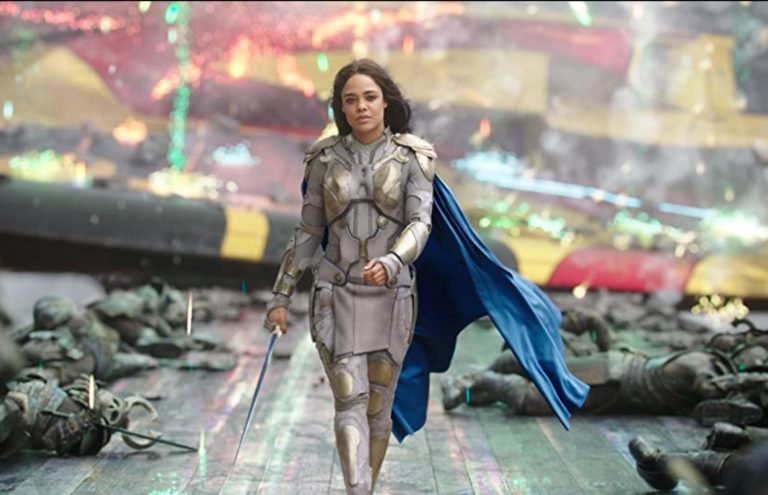

In addition to its critical praise so far, Marvel’s upcoming Phase Four is shaping up to be the most diverse yet, including more fleshed-out female characters, “Shang-Chi and the Legend of the Ten Rings” — which predominantly features actors of Asian descent — and promising future queer representation.
Kevin Feige himself has promised that more queer characters in the Marvel Cinematic Universe are on their way. Valkyrie, who has already appeared in a myriad of previous movies, is reported to have an even larger role in “Thor: Love and Thunder,” which will explore the character’s bisexuality (A cut “Thor: Ragnarok” scene was supposed to hint at her being the first queer character in the Marvel Cinematic Universe). “The Eternals,” set to release Nov. 5, is supposed to feature the first openly gay MCU hero, Phastos, but it’s entirely unclear what role or how prominent this will be in the film. Plus, with the introduction of Billy and Tommy in “Wandavision,” better known as Wiccan and Speed — who are canonically gay and bisexual, respectively, in the comics — alongside Hawkeye’s prodigy Kate Bishop, it seems as though Marvel is trying to introduce the Young Avengers to the screen, a group made up almost entirely made up of queer characters.
At this point, avoiding queer representation onscreen simply doesn’t seem to be an option for Marvel anymore, at least not without massive changes from the characters’ established comic book history. So the question remains: Is Marvel ready for outspoken queer visibility in its franchise?
In its movies, the answer remains complicated, especially in terms of international distribution profits. For the smash-hit blockbuster that closed out Phase Three, “Avengers: Endgame,” Marvel made $2.8 billion in worldwide box office sales. If Marvel wants to continue the same level of international success for its future movie endeavors, substantive changes may not be in the cards, as movies featuring prominent queer representation, such as “Call Me By Your Name” occasionally face hurdles when being distributed in international markets.
These hurdles present one obstacle to Marvel’s upcoming queer characters, as it can limit the amount of time and depth these characters are afforded. Disney’s past scraps of queer representation, such as that of two men dancing together in the background in “Beauty and the Beast” and the blink-and-you’ll-miss-it kiss between two women in the background of “Star Wars: Rise of Skywalker” were able to be displayed unedited when the films screened in other countries. This seems to suggest that these smaller scenes are the most Marvel — which Disney owns — would be willing to include in order to protect their international profits without any substantial changes to their movies.
It’s wholly naive to suggest that Marvel would derail hundreds of millions, if not billions, of dollars in profits for an entire slate of upcoming films, so it stands to reason that its upcoming movies will likely have meaningless throwaway moments between queer background characters, just as Disney has done numerous times in the past. Marvel has also shown in the past that it’s prone to this trend of queerness only in their non-superhero, non-important characters. Marvel’s “first openly gay character,” in the form of a short cameo by Joe Russo in “Avengers: Endgame,” in which his character recounts how he’s dealing with his grief while dating a new man.
Furthermore, this cameo happened 22 movies into the franchise — the extensive repertoire which contains mostly movies about straight white men — indicating that queer representation, at least in Marvel’s early films, was not integral to the franchise. In this sense, it seems like queer content isn’t Marvel’s focus, and that’s okay, but perhaps they’ve realized that young and queer people are missing from their extensive content demographics, causing them to cater to queer people as their straight audiences have already been substantially satisfied.
But ultimately, it would be a disservice to pretend as if the entirety of the United States is OK with queer representation onscreen, as other countries aren’t the only obstacle to more fleshed-out queer representation. A more diverse franchise could provoke huge outrage, just as it did for the Star Wars franchise, as fans bullied multiple actors off social media, including Kelly Marie Tran, the franchise’s first woman of color supporting character. As the Star Wars fan base contains a subset of fans spewing vitriolic misogyny and homophobia, it’s no surprise that Marvel may hope to prevent the same from happening to its future content.
As Feige states, there are queer characters in the Marvel universe “you’ve seen and ones you haven’t seen,” which seems to suggest a hopeful future for a number of the bigger question is whether this supposed queer representation is going to be substantial or not, whether it’s simply throwaway lines or acceptable for very minor or background characters only, as queer people deserve to have their stories authentically translated to the MCU, just as the romantic relationships of their straight characters are.
Caitlin Keller covers LGBTQ+ media. Contact her at [email protected]. Tweet her at @caitlinkeller20.